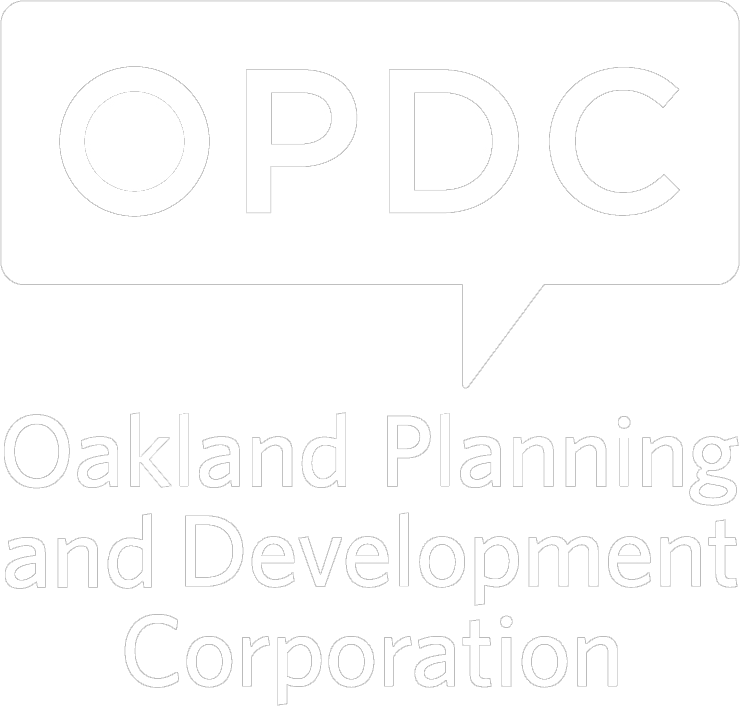Next month on Tuesday, February 8, the City of Pittsburgh Planning Commission gets to hear from Pittsburghers like you regarding Council Bill 2021-1906, “Oakland Crossings” – the proposed Oakland Public Realm District E. OPDC is asking the Planning Commission to issue a negative recommendation to City Council for this bill, for five main reasons:
1. The process is bad. As we’ve written before, the usual process for a zoning change of this magnitude involves iterative public input meetings in which suggestions are incorporated, objections are addressed, competing interests are balanced, and compromises are offered. City Planning staff are professionals who can contextualize proposed zoning changes and analyze the impacts those changes could have on surrounding communities. They solicit and respond to public input – it’s what planners do. This bill skipped that public planning process entirely, and the public has had no opportunity to have meaningful input on the content or structure of the proposed zoning change. Furthermore, part of the point of this bill is to skip over the ongoing Oakland Plan process, which *has* involved those community-led conversations.
2. The uses are bad. Leaving aside the question of whether mixed-use zoning is appropriate for a residential area, or whether rear-yard setbacks should be eliminated in order to accommodate more density in a multi-family zone – there is no good reason why parking garages, utilities, or college campus uses should be permitted in this area by right, and the bill offers no way to minimize or mitigate the negative impact those uses would have on surrounding residential zones.
3. The purpose is bad. There is nothing wrong with residential density. Oakland has a lot of dense multi-family residential development – both old and new – and there’s no doubt it needs more: to relieve student rental pressure in single-family neighborhoods, provide affordable rental for low and moderate income families close to jobs, and invite professionals to live closer to work instead of commuting into Oakland by car. It’s understood that market-rate rental is a money-maker here, and developers need no public subsidies or other incentives to build it. What Oakland needs is a set of tools to capture some of the value of that market rate development, to fund the construction of more affordable units. But the purpose of this bill is to offer incentives to private developers to build market-rate residential units (including subsidy from the University of Pittsburgh, and height bonuses in the bill for the construction of hotels and apartment buildings), and to allow those developers to avoid any requirement to include affordable housing units in their projects.
OPR-E superimposed with current zoning map of Oakland.
4. The district boundaries are bad. OPR-E is strangely and awkwardly shaped (a) because the district boundaries are drawn around where Walnut Capital owns or controls property, and (b) because zoning districts have to be contiguous. Wherever possible, zoning districts should not split two sides of a street into separate uses, but OPR-E does just that on McKee Place. The skinny bridge connecting Subdistrict A with Subdistricts B and C is city right-of-way on Louisa Street, and doesn’t include any of the properties on Louisa – why? Because Walnut Capital doesn’t own or control those properties. And in the context of the larger zoning map, OPR-E creates two enclaves on Coltart Street and Halket Place: small islands of single-family houses entirely surrounded by public realm districts.
5. It’s just not necessary. All the possibly desirable things the bill’s sponsors are promising (such as improved public open space, safer pedestrian crossings at the Boulevard of the Allies, new opportunities for dense market-rate residential development, a grocery store, a thriving mixed-use development district, the removal of unloved down-market rental) are already possible in the Oakland Public Realm Subdistrict D without any zoning changes whatsoever. There’s no compelling reason why the public realm needs to be expanded into Oakland’s residential neighborhoods, when many parcels in the existing public realm are available for mixed-use redevelopment. Last but not least, the Oakland Plan will include recommendations for areas where greater density would be more appropriate; and it will include zoning guidelines that support the construction of affordable housing units.
We’d love to hear from you – what are your interests and concerns about this bill? Drop your comments below. If you’d like to provide testimony at the Planning Commission hearing on February 8, check out our summary and guidelines here.
* Please note - the Planning Commission hearing was originally scheduled for January 11, 2022. Mayor Gainey requested a 30-day continuation; this blog reflects the new hearing date of February 8, 2022.

